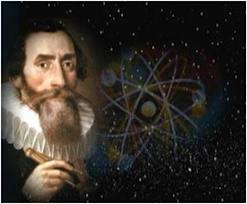In 1597 he married Gemma van Dvijneveldt (a widow with a young daughter), with whom he had five children: Heirich and Susanna (both died in infancy), Susanna, Friedrich and Ludwig. Following the death of his first wife, he married Susanna Reuttinger in 1613. The children of this marriage were Margareta Regina, Katharina and Sebald (all died in childhood), Cordula, Fridmar and Hildebert. Kepler died in Regensburg, Bavaria on 15 Nov 1630.
Kepler was a German mathematician, astronomer and astrologer. A key figure in the 17th century scientific revolution, he is best known for his laws of planetary motion, based on his works Astronomia nova, Harmonices Mundi and Epitome of Copernican Astronomy. These works also provided one of the foundations for Isaac Newton's theory of universal gravitation.
 |
| Read it HERE |
Years later, a distorted version of the story may have instigated the witchcraft trial against his mother, as the mother of the narrator consults a demon to learn the means of space travel.
In 1615, Ursula Reingold, a woman in a financial dispute with Kepler's brother Christoph, claimed Kepler's mother Katharina had made her sick with an evil brew. The dispute escalated, and in 1617 Katharina was accused of witchcraft; witchcraft trials were relatively common in central Europe at this time. Beginning in August 1620, she was imprisoned for fourteen months. She was released in October 1621, thanks in part to the extensive legal defense drawn up by Kepler. The accusers had no stronger evidence than rumors, along with a distorted, second-hand version of Kepler's Somnium, in which a woman mixes potions and enlists the aid of a demon. Katharina was subjected to territio verbalis, a graphic description of the torture awaiting her as a witch, in a final attempt to make her confess.
Following her eventual acquittal, Kepler composed 223 footnotes to the story—several times longer than the actual text—which explained the allegorical aspects as well as the considerable scientific content (particularly regarding lunar geography) hidden within the text.

